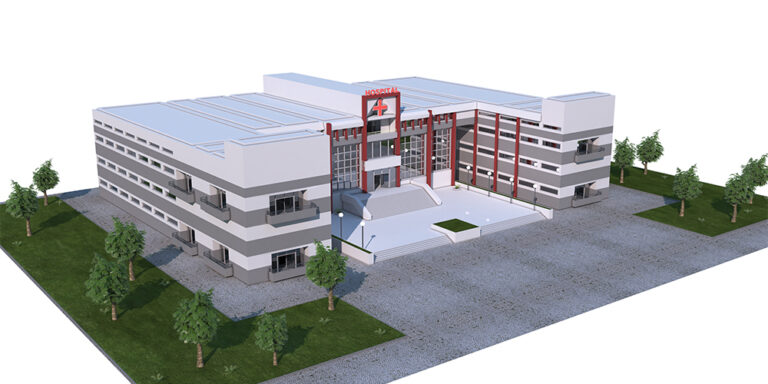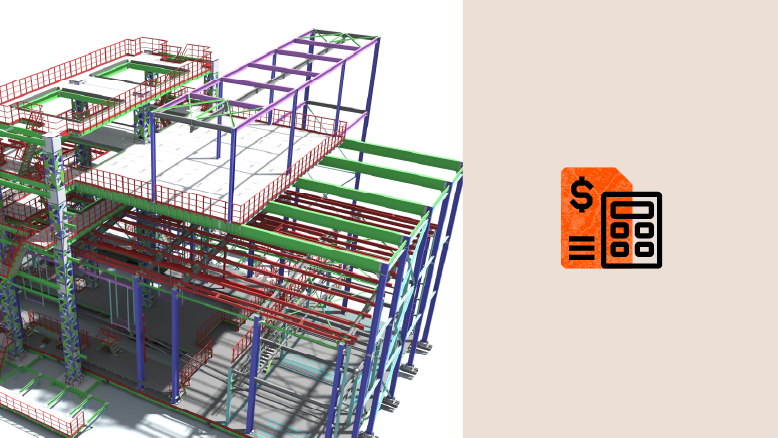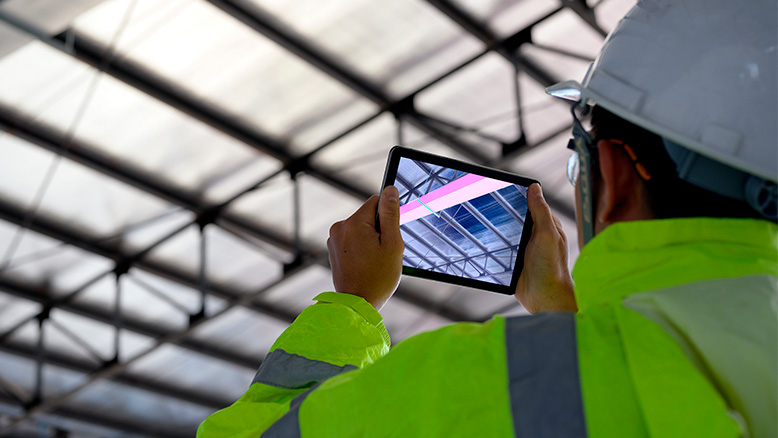— 9 min read
9 Ways BIM Improves Healthcare Construction
Last Updated Jun 6, 2025

Healthcare projects are among the most complex of all construction projects, requiring highly specialized technology and complicated, tightly coordinated MEP systems. Building Information Modeling (BIM) offers numerous advantages that significantly improve the planning, design and construction processes. Due to the significant improvements in planning, communication and coordination, many of the biggest healthcare corporations in the world have actually mandated that projects are built to their BIM standards.
In this article, we’ll take a closer look at the benefits BIM brings to healthcare construction — and how owners, architects and contractors can take full advantage of them.
Table of contents
1. Coordination & Clash Detection
One of the core benefits of BIM — where it truly shines — is its ability to optimize productivity through improved coordination and clash detection. In a healthcare setting, where multiple systems like electrical, mechanical, and plumbing must coexist in confined spaces, BIM is invaluable. It allows for precise modeling of each system, enabling contractors and designers to identify and resolve clashes before construction begins.
I still find some applications where 2D coordination is beneficial in healthcare projects. For example, when dealing with large reflective ceiling plans, working in 2D can sometimes be faster than using 3D models. This is also true for framing analysis of critical walls — fire-rated walls, acoustically rated walls, lead walls — commonly found in healthcare facilities. In these cases, 2D reviews can actually be easier. So it's not always about using BIM exclusively; instead, a hybrid approach often works best. When training team members, I recommend having the BIM model and 2D plans open on separate screens for constant reference.
Dave McCool
Director of Product
Procore Technologies
2. Predictability
Healthcare projects are incredibly complicated, with numerous systems that need to be meticulously coordinated. Due to this complexity, construction firms that work on healthcare facilities typically use their best, most experienced teams on those projects.
BIM provides an unparalleled level of predictability in construction by enabling detailed visualization and coordination of all building components. This ensures that potential issues are identified and resolved early, leading to smoother construction phases and fewer surprises on the jobsite, and even after closeout.
In BIM applications, you can create objects and their families, which can have a lot of intelligence embedded in them. For instance, consider an MRI machine or even something as simple as a paper towel dispenser. Each of these can have its own family, specifying the brand used on every healthcare project. Healthcare providers will often require architects to use this family library when designing hospitals to ensure consistency in cost and maintenance data.
When these standardized objects are used, all the necessary information is readily available. Mechanical, electrical, and plumbing engineers must also use this family library for their designs, as it includes pre-injected metadata, providing valuable information at no extra cost.
This approach goes beyond mere project coordination; it considers the long-term maintenance and operational efficiency of healthcare facilities. Owners even standardize the objects used on their projects to maximize downstream benefits in the operational phase.
Dave McCool
Director of Product
Procore Technologies
3. Collaborative Project Delivery
The success of BIM is closely tied to collaborative project delivery methods, such as design-build, CMAR and Integrated Project Delivery (IPD), which can provide better, more accurate outcomes.
These methods bring all stakeholders, including the GC and specialty contractors, into the project early to coordinate during design. This generally doesn’t happen on projects with a hard bid process. Getting specialty contractors involved in those conversations early improves coordination during construction in a big way.
When hospitals and healthcare providers embrace integrated delivery methods, they set up the project team to take full advantage of the benefits BIM provides. By creating a shared digital model, all parties can access up-to-date information, visualize the project in 3D, and identify potential issues early on. This collaborative environment reduces misunderstandings, streamlines decision-making, and ensures that everyone is on the same page throughout the project lifecycle.
Dive deeper – Hospital Construction: Building to Save Lives
4. Jobsite Productivity
BIM's ability to identify and address potential issues early in the design phase leads to significant cost savings in the field. By minimizing errors and rework, BIM reduces material waste and labor costs.
BIM's detailed models provide the foundation for using advanced technologies like Robotic Total Stations and automated layout tools. These technologies increase productivity and accuracy on-site.
For example, a Robotic Total Station (RTS) can perform layout tasks more quickly, more accurately and with fewer resources than traditional methods. And automated layout printers can precisely mark installation points for faster execution, with all of the data being fed from the coordinated models.
Explore data and trends for building materials prices.
Get the latest U.S. retail prices and view historical trends for common building materials.
5. Regulatory Compliance
Healthcare construction projects must comply with numerous regulations and standards. BIM helps ensure compliance by integrating regulatory requirements into the design process. The digital model can be checked against building codes and healthcare regulations, allowing for necessary adjustments before construction begins. This proactive approach reduces the risk of non-compliance and associated penalties.
Although regulatory agencies primarily review 2D drawings — the drawings are typically part of the contract, while the model is not — these drawings are increasingly generated from BIM models. This integration simplifies the process of updating and resubmitting designs for approval, ensuring that regulatory requirements are met without compromising the efficiency of the BIM process.
6. Design Clashes
Healthcare construction presents unique challenges, such as the installation of pneumatic tubes and miscellaneous metals, like surgical booms and patient lifts and curtain tracks. BIM helps in resolving these common design clashes by providing detailed models that allow for early detection and resolution of conflicts.
Deep Dive: Learn about the unique design needs of surgical center construction.
For example, the ceiling above an operating room may need to accommodate a pneumatic tube system, mixed metal support structures for booms and lifts, and extensive ductwork sufficient for laminar air flow. All of these interconnected systems can be accurately modeled in BIM for a detailed review to ensure systems don’t interfere with each other.
Pneumatic tubes are a significant challenge in healthcare construction. Typically, the designs are about six inches in diameter, but with acoustic insulation, they can expand to nine inches. And they require four-foot sweeps to prevent clogs as they navigate through the hospital.
These long, bending sweeps are cumbersome and often obstruct other systems. Pneumatic tubes usually have redundancies. In drawings, engineers often denote these tubes with a simple line labeled "PT," but then the actual model comes in with multiple nine-inch pipes with extensive sweeps.
So if buyout of pneumatic tubes comes too late in coordination, it can wreck the process. When in doubt, block it out.
Dave McCool
Director of Product
Procore Technologies
7. Facility Management & Operations
BIM's benefits extend beyond construction into facility management and operations. By involving facility managers early in the process, healthcare projects can leverage BIM models for efficient maintenance and operation in the future.
Accurate as-built BIM models provide a reliable reference for future renovations and updates, ensuring that facility managers have the information they need to keep systems running smoothly.
On one hospital project, we didn't get the facility manager involved early enough. When he finally came in, he was like, 'I can't access that valve. You'll need to drop all the systems so I can reach the valves after the fact.'
Involving facility managers early helps not only with coordination but also improves the quality of life for trades and the GC by avoiding costly last-minute changes. Plus, the owner benefits from smoother operations. It's about getting all the stakeholders involved from the start to ensure everything runs efficiently and effectively.
Dave McCool
Director of Product
Procore Technologies
8. Immersive Review
BIM enhances collaboration among all project stakeholders. Tools like virtual reality (VR) can provide immersive experiences that allow doctors, nurses and other professionals to give valuable feedback on room layouts and designs. This feedback ensures that the final design meets the specific needs of healthcare providers, leading to better patient care environments.
I remember doing some VR studies, and one of the most notable experiences was reviewing drawings with doctors and nurses. The feedback you get from a 2D review just doesn't compare to what you receive when you put them in the space using VR. When you ask a doctor in VR what they think about a patient room or an operating room, they will pick it apart.
For example, we were working on a PACU layout and had modeled four different options. One of the options had two beds with head walls on either side and a curtain in between. The doctor had seen the drawings and layouts but had no real comments initially.
However, once we put him in VR, his reaction was immediate. The first option was flagged as a HIPAA violation because the patients could see each other. This critical issue wasn't apparent in the 2D drawings but became instantly clear in VR. The doctor knew right away that it wouldn't work and moved on to the next option. This experience really showed how valuable VR can be for getting the best feedback possible.
Dave McCool
Director of Product
Procore Technologies
9. Future-Proofing
With BIM, healthcare facilities can be designed with future needs in mind. The detailed information embedded in BIM models makes it easier to upgrade and adapt facilities as medical technology evolves. This forward-thinking approach ensures that healthcare buildings remain functional and efficient over their entire lifecycle.
Healthcare facilities often require renovations and updates, which can be challenging in operating buildings. BIM simplifies the renovation process by providing detailed models of existing conditions, enabling precise planning and coordination of new installations. Technologies like Light Detection and Ranging (LiDAR) scanning can capture accurate measurements of existing structures, ensuring that new designs integrate seamlessly with old systems.
Owners often have these new requirements for the models to be updated and as-built to a quarter-inch accuracy with different systems for future renovations. They want to be able to hand this BIM file to the next design team and say, ‘Here are the as-built conditions. Now you can model and base the renovation off of it.’ This level of detail ensures that the future renovations can be done accurately and efficiently, without having to start from scratch.
Dave McCool
Director of Product
Procore Technologies
BIM: An Essential Tool in Healthcare Construction
BIM has become an essential tool in healthcare construction, offering numerous advantages that improve project outcomes. By enhancing coordination, facilitating regulatory compliance, supporting facility management, and enabling efficient renovations, BIM helps create healthcare environments that are better designed, more functional, and easier to maintain. The complexities of healthcare construction demand the precision and efficiency that only BIM can provide, making it an indispensable part of modern building practices.
Was this article helpful?
Thank you for your submission.
0%
0%
You voted that this article was . Was this a mistake? If so, change your vote here.
Scroll less, learn more about construction.
Subscribe to The Blueprint, Procore’s construction newsletter, to get content from industry experts delivered straight to your inbox.
By clicking this button, you agree to our Privacy Notice and Terms of Service.
Categories:
Tags:
Written by
Dave McCool
Dave McCool is a Director of Product at Procore and author on BIM and construction tech. He holds a master’s degree in engineering, DBIA, and LEED accreditation, but has realized that his BS in psychology is much more useful in the construction industry than any of the other credentials. Dave has a background of over 9 years of BIM management and coordination experience at McCarthy Building Companies and Brasfield and Gorrie, and is the co-author of BIM and Construction Management: Proven Tools, Methods, and Workflows — a complete integration guide for implementing BIM in construction. He has lectured at multiple university and industry events, and has held chair positions for both AIA and NBIMS committees. He is also a co-founder of Virtual Builders. Originally from Alabama, he now lives in Los Angeles, where he enjoys the sunny weather, trying to surf, and playing music on the weekends.
View profileJulia Tell
50 articles
Julia Tell is a freelance writer covering education, construction, healthcare, and digital transformation. She holds a Ph.D. in Media & Communications and has written for publications including Business Insider, GoodRx, and EdSurge, as well as nonprofits, international businesses, and educational institutions.
View profileExplore more helpful resources

How BIM Software Supports Construction Teams in the Field
Gaps between project design and field execution can cost a lot of money. Architects can create beautiful designs, but if the foreperson and trade crews don’t have access to the...

Guide to the Common Data Environment (CDE) & BIM
BIM isn’t just a 3D model. As its full name — building information modeling — suggests, BIM encompasses processes, too. It’s a wide-ranging digital effort designed to drive wins on the...

BIM for Construction Cost Control & Budget Management
As the construction industry advances in its digital transformation journey, building information modeling (BIM) is becoming increasingly common. Teams and individuals who push back against using the 3D model and...

How to Use Tech to Keep Construction Clash-free
Construction professionals are leveraging technology to make clash detection work smarter, not harder. With cloud-based platforms and sophisticated software, they are not only spotting clashes —they’re averting and resolving them...
Free Tools
Calculators
Use our calculators to estimate the cost of construction materials for your next project.
Templates
Find a template to help you with your construction project tasks.
Material Price Tracker
Get the latest U.S. retail prices and view historical trends for common building materials.
Glossary
Explore key terms and phrases used in the industry.